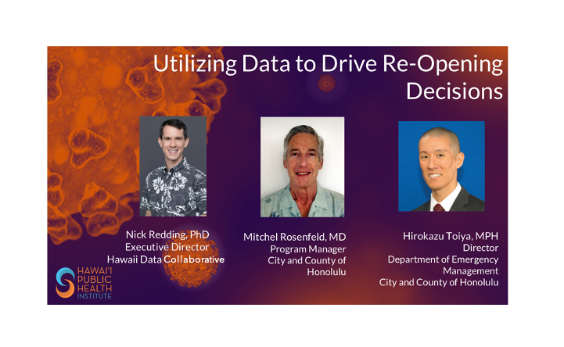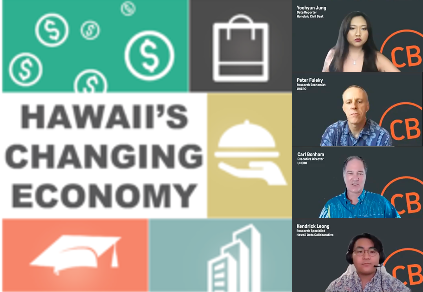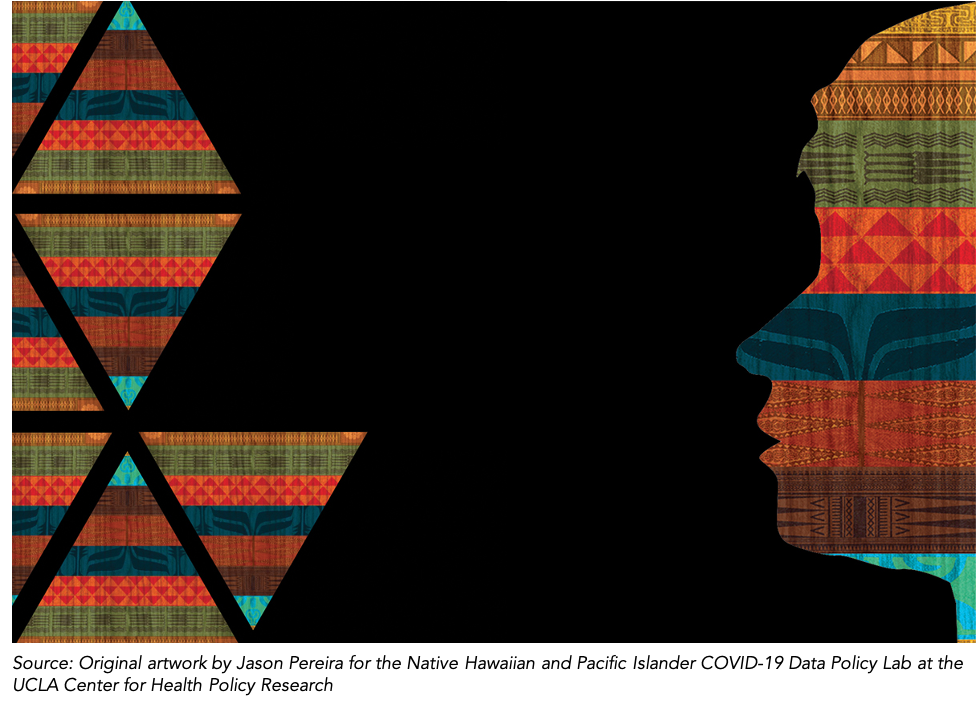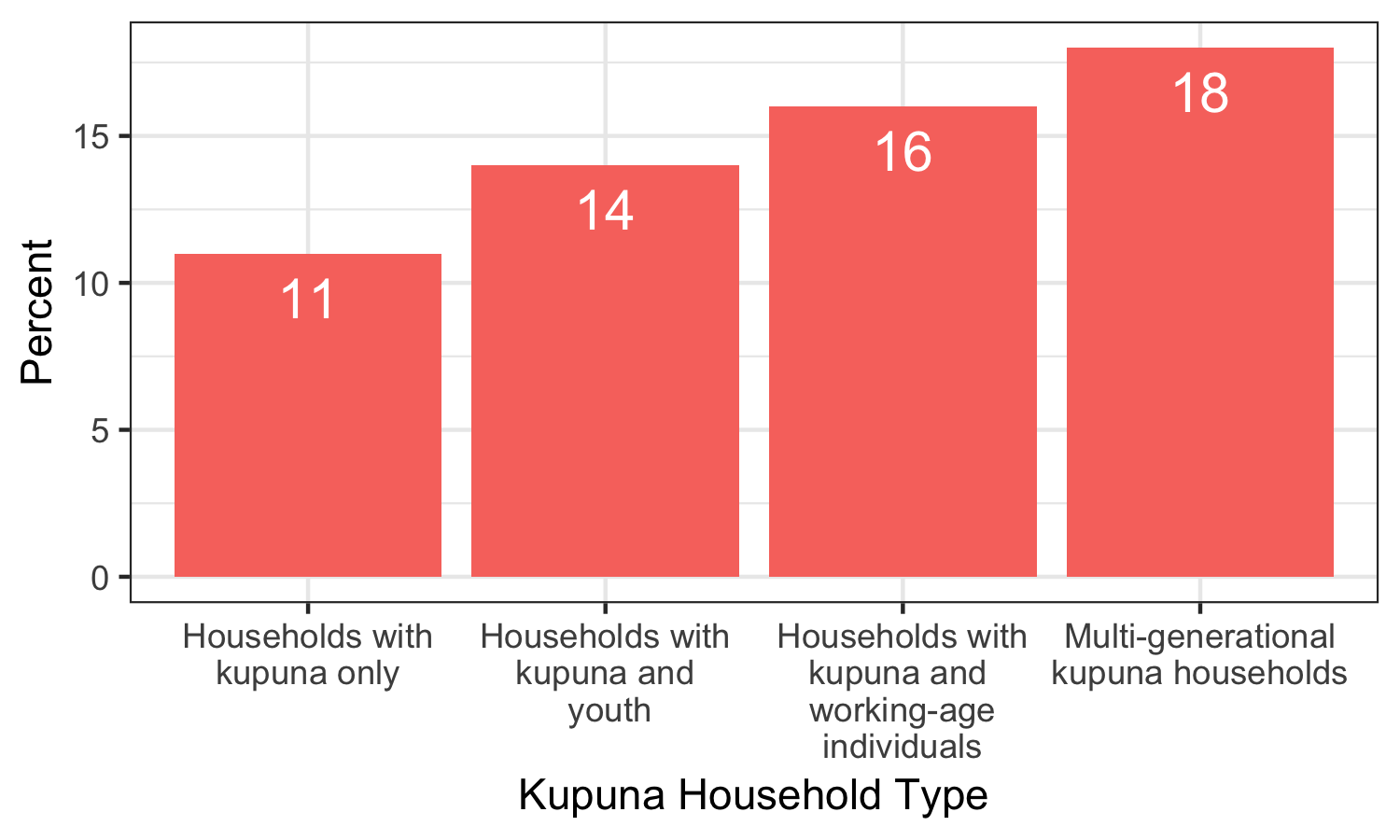News & Updates

Hawai‘i Data Collaborative at the 16th Hawai‘i Book & Music Festival
Nick Redding, Executive Director of the Hawai‘i Data Collaborative (HDC), was invited to join two panels at the 16th Annual Hawai‘i Book and Music Festival.
The first panel took place on October 5th, and included experts in healthcare, public health, and data to discuss Lessons for Future Pandemics. The second panel took place on October 28th, and included data experts to discuss Big Data Visualization.

The Hawai‘i Variable: COVID-19 Dashboards Workshop
On January 21, 2021, Civil Beat's data reporter, Yoohyun Jung moderated a panel of experts as they explored Hawai‘i's COVID-19 data dashboards during an in-depth workshop and discussion.
Panelists included:
Nick Redding, Hawai‘i Data Collaborative
Joshua Quint, Hawai‘i Department of Health, Disease Outbreak Control Division (DOCD)
Niea Gardner, Hawai‘i Emergency Management Agency (HIEMA)
Victoria Fan, University of Hawai‘i at Manoa and Hawai‘i Pandemic Applied Modeling Work Group (HiPAM)
Panelists demonstrated how to navigate Hawai‘i’s many COVID-19 data dashboards and figure out how to extract the most important, and interesting, information out of them.

Tracking the Coronavirus and the Federal Funding
In Hawai‘i Magazine’s “Hawai‘i Gives Back” Series, Hawai‘i Data Collaborative’s (HDC) Nick Redding is featured in “Tracking the Coronavirus and the Federal Funding” contributed by Hawai‘i Community Foundation, where he discussed:
Why HDC works to make data accessible;
How COVID created a shock to the system that has helped people see the value in data;
What we should be doing now to prepare for the next disruption.

HiPHI's COVID-19 Public Health Action Webinar: Utilizing Data to Drive Re-Opening Decisions
Hawaii Data Collaborative’s Executive Director, Nick Redding, joined the Hawaii Public Health Institute (HiPHI) and other panelists to discuss how COVID-19 data is informing the City and County of Honolulu’s re-opening strategy, tier system, and other related policy decisions. Some of the main points Nick highlighted were Hawaii Data Collaborative’s mission to elevate critical data to address Hawaii’s most pressing challenges; how the coronavirus pandemic amplified the urgency of that mission; and, some of the collaborative efforts that emerged to support the state’s response. Moderating the discussion was Stephanie Moir, from the HiPHI team; other panelists included Dr. Mitchel Rosenfeld, Program Manager with the City and County of Honolulu, and Hirokazu Toiya, Director of the City and County of Honolulu’s Department of Emergency Management.

The Hawaii Variable: A Data-Based Discussion About the Economy
Hawaii Data Collaborative’s Research Specialist, Kendrick Leong, joined Honolulu Civil Beat on a panel for a data-based discussion around the impacts of COVID-19 to Hawaii’s economy. Some of the main points Kendrick highlighted were the difficulty in finding county and sub-county data to aid decision making on neighbor islands; examining economic indicators in the context of COVID data; reiterating that economic recovery is value-laden; and, identifying groups that may be left out of federal aid spending.
Moderating the discussion was Yoohyun Jung, data reporter for Honolulu Civil Beat; other panelists included Dr. Carl Bonham, Executive Director of the University of Hawaii Economic Research Organization (UHERO), and Dr. Peter Fuleky, Research Economist at UHERO.

New Platform Provides Much-Needed Data on COVID-19 Impacts Among Native Hawaiians and Pacific Islanders
Last month, the UCLA Center for Health Policy Research unveiled its Native Hawaiian and Pacific Islander COVID-19 Data Policy Lab and corresponding NHPI COVID-19 Data Policy Lab Dashboard in an effort to address the dearth of information regarding the disease’s impact on these groups. Why is the launch of the Lab significant for NHPI researchers, and what can decision- and policy makers learn from the data the Lab makes available? We explore a few answers…

Metrics Maketh Man: The Economic Indicators We Track Define Us
The challenge of summarizing the entire economy through individual indicators is akin to perfectly defining the word “economy” itself. There is an ongoing academic dispute over whether composite indicators or indices are inherently good or bad. Critics object to the arbitrary nature of the weighting process, or the extent to which the performance of individual indicators contributes to movement in a single “score” or composite indicator. Regardless, indices are powerful in their ability to showcase in one score what might not be apparent from examining multiple individual indicators in isolation.
In this post, we take one step back from the debate and instead draw attention to why indicators are selected, rather than whether they should have been selected or combined at all. Our values as a society are revealed in the curation of economic indicators (whether for the Brookings dashboard or UHERO’s Economic Pulse) – we implicitly prioritize certain metrics by elevating them to a position within a dashboard or index. Let’s take a deeper look at a few specific indicators that illustrate this point.

Why We Are Working to Track Hawaii's COVID-19 Federal Funds Spending
Recently, our work to track the State’s progress in spending down federal funds awarded to the State in response to COVID-19 have been highlighted by the House Select Committee on COVID-19 Economic and Financial Preparedness and recent news accounts. The Hawaii Data Collaborative strives to promote a culture of data-informed decision making in Hawaii, by making data that is relevant to our most pressing challenges accessible, relevant, and meaningful.
Given the urgency of need as we continue to navigate post-COVID stresses on our families and communities, and the looming end-of-year timeline for spending down $1.25B in Coronavirus Relief Funds (CRF), we felt the need to work quickly to make sure information about our spending is available on a timely and insightful platform. Equally important are the partnerships that make this possible.

How Good Data Can Advance Health Equity
Research has consistently found Native Hawaiians and Pacific Islanders (NHPI) are at increased risk of a range of preexisting and underlying health inequities, which in turn places members of these communities at increased risk of infection and severe illness from COVID-19. During the current pandemic, the disproportionality of the disease’s impact distills the health inequities borne by our state’s Pacific Islander community: currently, 30 percent of confirmed COVID-19 cases are among non-Native Hawaiian Pacific Islanders, although they constitute only 4 percent of Hawaii’s population. Recent media coverage suggests, despite recognizing Pacific Islanders’ heightened health risks for the disease, Hawaii state health officials were unprepared to adequately address the needs of this institutionally underserved community during the pandemic.
How can Hawaii better serve the health needs of Pacific Islander communities, particularly as the state wrestles with the impacts of COVID-19? Good data can certainly be part of the solution. What might “good data” mean, in this context?

Where Does Hawaii Stand in Terms of Publicly Available COVID-19 Data?
Earlier this week, a New York-based nonprofit, Resolve to Save Lives (RSL), headed by the former director of the Centers for Disease Control and Prevention (CDC), released a report outlining “15 essential indictors” that should be reflected in every State COVID-19 dashboard, including in what format the data should be reported and how the data should be stratified by age, sex, ethnicity and geography. Based on this framework, RSL inventoried each State in terms of the data that is currently publicly available. The results for Hawaii are not flattering. Out a possible 100%, Hawaii currently scores at 13%, making available (to RSL’s satisfaction) four out of the 15 recommended indicators:

AUW's Lisa Kimura Discusses the Updated ALICE Report, and the Impact of COVID-19 on Hawaii's Struggling Families
Lisa Kimura, Vice President of Community Impact at Aloha United Way, discusses the updated ALICE® report, what it told us about Hawaii’s financially struggling families pre-COVID since the last report was done in 2018, how much Hawaii’s ALICE-and-below population will grow as a result of COVID-19, and the level of broad collaboration necessary to uplift families out of ALICE status.

Fifty-nine Percent of Hawaii Households Estimated to Experience Significant Financial Hardship by the End of 2020
Aloha United Way released an updated report, ALICE®: A Study in Financial Hardship in Hawaii, indicating forty-two percent of Hawaii’s households are struggling to get by. That was pre-COVID-19 arriving to our islands. We partnered with AUW to estimate that in the wake of the Coronavirus pandemic, an additional 35,000 households will face severe financial hardship by the end of the year.

Underlying Health Conditions And How They Impact Our Vulnerability in Hawaii
While Hawaii seems to have stemmed the spread of the Coronavirus for the time being, health experts and our community leaders continue to express undertones of caution. That applies especially to our kupuna and anyone who may have serious underlying medical conditions. What does data collected from our own surveys tell us about our underlying medical conditions and where we are most vulnerable during this pandemic?

Testing Testing 1-2-3
Respondents of our survey perceive that access to testing is insufficient. Many survey participants expressed frustration with the inability to meet the criteria for testing, despite showing symptoms or other factors they believe warrant COVID-19 testing. In addition, home test kits were mentioned numerous times as one preferred method to ensure greater access to adequate testing.

How Vulnerable is Hawaii in the Face of a Coronavirus Pandemic?
While Hawaii has done well by sheltering in place, other socio-economic factors could place us in a precarious position if we were forced to respond to a full-blown pandemic, disproportionately affecting certain segments of the population–even those who are our closest neighbors. Some have suggested that our decision makers are being overly cautious when considering when and how to reopen the state to business and life in general. They insist that we have turned the corner. And we have. But, as the Surgo Foundation’s index shows, we still have much to be careful about during a pandemic that has yet to show us its teeth and full bite in Hawaii.

Our Kupuna: Understanding their Risks
Our findings suggest that transmission of COVID-19 is more likely to occur among younger individuals who are more active in the community. In our survey, individuals between the ages of 25 to 44 were the most likely (19%) to report symptoms of COVID-19 or have a household member who tested positive for the virus when compared with other age groups.

Community Vulnerability Index Provides Insights on Pandemic Preparedness
If you’ve done even limited reading about COVID-19 in recent weeks, you’ve likely encountered a short, consistent list of risk factors for individuals developing serious illness from the disease: those ages 65 and older, and anyone with underlying medical conditions. But what do we know about community-level risk for COVID-19? How might we identify which communities are more or less resilient to the current pandemic?
A good place to begin exploring answers to these questions can be found through the COVID-19 Community Vulnerability Index (CCVI).

Ongoing and Comprehensive Information Key to Reopening Hawaii
More importantly, some communities reported higher rates of COVID-19 related symptoms compared to their response rate (e.g. Waianae and Maui)—an indication that these communities may require additional information and resources to mitigate the impacts of the virus. Conversely, communities with lower reported symptoms relative to their response rate may have greater access to information that is helping to protect its citizens (e.g. East Honolulu).

COVID-19 Highlights Vulnerabilities of Rural Hawaii
After an initial delay, cases in rural communities have climbed throughout the country. On March 6, COVID-19 first emerged in Hawaii on its most densely populated island of Oahu. Cases followed in mid-March and early April on the state’s neighbor islands, home to the Hawaii’s more rural areas. As of April 19, 2020, Hawaii Island reported 62 COVID-19 cases; Maui (including Molokai), 106 cases; and Kauai, 21 cases, compared to Oahu’s 385. Although the majority of cases in the state remain on Oahu, the slow and steady growth of confirmed COVID-19 infections on neighbor islands confirms that they are susceptible to the disease as well.
The Good, The Bad, and Social Distancing in Hawaii
During times of crisis, the vulnerable are at even greater risk of becoming casualties of fast moving events. In Hawaii and throughout the nation, we are beginning to see how the current pandemic is overwhelming seniors, those living in poverty, those living on the edge of poverty, and the homeless. They are the most vulnerable in these times. And while they may be overwhelmed, in Hawaii, they are never left behind. That is not what we do nor who we are.
